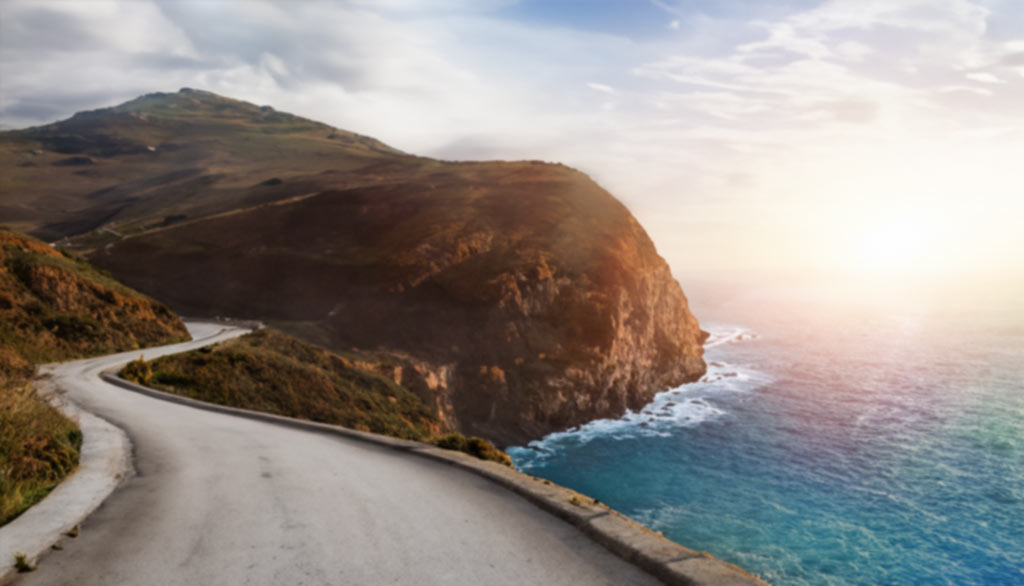National holiday, also called public holiday, in Crete and Greece is a legally recognised non-working day during the year. Greece, including Crete, observes public holidays rooted in its cultural, religious and historical traditions.
National holidays in Crete and Greece include Greek Independence Day, Orthodox Easter Monday, New Year’s Day, Epiphany, Labour Day and Christmas. The Orthodox Christian faith plays a central role, especially in holidays like the Dormition of the Holy Virgin on August 15.
Greek Independence Day commemorates the 1821 War of Independence against Ottoman rule, coinciding with the Feast of the Annunciation, and is marked with parades, speeches and patriotic events across both Crete and Greece, where locals honour their ancestors’ fight for freedom.
The Orthodox Christian faith plays a central role, particularly in celebrations like the Dormition of the Holy Virgin and Easter, the most significant religious holiday in Crete and Greece.
Easter involves a series of solemn observances leading up to Easter Sunday, with Good Friday and Holy Saturday featuring processions and church services. Easter Sunday is celebrated with feasts of lamb, red-dyed eggs and “tsoureki” bread. Celebrations continue into Easter Monday with family gatherings in Crete and Greece.
The Dormition of the Virgin Mary on August 15, commemorating her assumption into heaven, is observed with church services, processions and village festivities. Many people in Crete and Greece make pilgrimages to churches dedicated to the Virgin Mary.
The national holidays of Crete and Greece are listed below.
- Christmas Day. Christmas Day, celebrated on December 25, marks the birth of Jesus Christ with church services, festive meals, and family gatherings. In Orthodox and Christian communities, the holiday emphasises faith, joy, and togetherness.
- New Year’s Day. New Year’s Day, a national holiday in Crete and Greece celebrated on January 1, marks the start of the new year with family gatherings, festive meals, and gift-giving.
- Epiphany (Theophany). Epiphany, also known as Theophany, is celebrated on January 6 in Orthodox Christianity to commemorate the baptism of Jesus Christ. This day features the Blessing of the Waters ritual, symbolising Christ’s manifestation and purification of creation through His baptism.
- Clean Monday (Kathari Deftera). Clean Monday (Kathari Deftera), observed six Mondays before Palm Sunday, marks the beginning of Lent in Orthodox Christianity. Celebrations include kite-flying, outdoor gatherings, and traditional vegetarian feasts, symbolising spiritual and physical cleansing.
- Greek Independence Day. Greek Independence Day, observed on March 25, celebrates Greece’s liberation from Ottoman rule with nationwide parades, traditional dances, and patriotic events. This day also honours the Feast of the Annunciation in the Greek Orthodox Church, adding religious significance to the national holiday.
- Good Friday (Orthodox). In Orthodox Christianity, Good Friday is the solemn commemoration of Christ’s crucifixion, observed with prayers, hymns, and processions symbolising His burial. This observance, based on the Paschal calendar, is a day of reflection and reverence, marking the Friday before Orthodox Easter.
- Easter Monday (Orthodox). Orthodox Easter Monday, celebrated the day after Orthodox Easter Sunday, continues the celebration of Christ’s resurrection with family gatherings, feasting, and community festivities. This day, marking renewal and joy, extends the spirit of Pascha and often includes traditional foods and local customs.
- Labour Day. Labour Day, celebrated on May 1, honours workers’ rights with parades, protests, and cultural events worldwide. In Greece and other countries, it also marks the arrival of spring with flower festivals and gatherings, blending labor recognition with seasonal celebrations.
- Pentecost Sunday (Orthodox). Orthodox Pentecost Sunday commemorates the descent of the Holy Spirit upon the Apostles, marking the Church’s founding. It is celebrated 50 days after Easter and includes special church services with prayers and hymns. In Greece, families gather for festive meals, symbolising unity and spiritual renewal.
- Assumption of the Virgin Mary. The Assumption of the Virgin Mary, celebrated on August 15 in Orthodox Christianity, commemorates the Virgin Mary’s passing and her assumption into heaven. This day includes church services, processions, and festivals, honouring Mary’s role and devotion.
- Ochi Day. Ochi Day, celebrated on October 28 in Greece, commemorates Greece’s 1940 refusal (“Ochi”, meaning “No”) to the Axis powers’ demands during World War II. Ochi Day national holiday is marked with military parades, patriotic events, and speeches, celebrating Greek resilience and independence.
- Synaxis of the Mother of God. The Synaxis of the Mother of God, observed on December 26, honours the Virgin Mary and continues the Christmas celebrations. The day focuses on Mary’s role in Christ’s birth and is often celebrated with special church services and family gatherings.
1. Christmas Day
Christmas Day, celebrated on December 25 in Crete and Greece, marks the birth of Jesus Christ. Festivities for Christmas begin on November 15 with the 40-day Nativity Fast and conclude on January 6 with Epiphany.
The Christmas season in Crete spans from November 15 to January 5, with Christmastide starting on December 24. Christmas in Greece has historical roots in early Christian traditions from around 354 AD.
The blending of ancient customs with Christian beliefs has shaped modern celebrations of Christmas Day. The myth of the kallikantzaroi, mischievous spirits appearing during the holiday season, is a distinctive part of Greek folklore that adds fun and caution to the Christmas festivities.
Christmas is less significant than Easter for many Greeks, yet it remains important for family gatherings and community bonding. Christmas rituals in Crete strengthen family ties and cultural identity.
Crete’s Christmas celebrations include distinct elements, such as a focus on boat decorations over Christmas trees due to its maritime culture. Cretan cuisine incorporates unique local ingredients, differing from mainland Greece dishes. Towns feature vibrant markets and community events showcasing local artisans and musicians.
Some customs and traditions of Christmas Day in Crete and Greece and are listed below.
- Children sing “carols” (Kalanta) door to door on Christmas Eve with musical instruments like triangles and drums. Children sing songs that tell Christmas stories and praise the homeowner and receive sweets or coins in return, which strengthens community bonds.
- Greek families decorate small boats instead of Christmas trees to honour St. Nicholas, the patron saint of sailors on Christmas Day.
- Families in Crete gather for a festive meal, at 13:00 on Christmas Day, with traditional dishes like roasted pork and “Christopsomo” (sweet spiced bread).
- Greeks bake traditional cookies like “melomakarona” (honey cookies) and “kourambiedes” (almond shortbread) before Christmas Day. These treats are shared with friends and family. Local wines and raki are enjoyed with meals.
- Families serve Vasilopita, a New Year’s Day cake with a hidden coin for luck, on Christmas Day to bring good luck in the new year.
2. New Year’s Day
New Year in Crete and Greece is celebrated on January 1st, with festivities beginning on December 31st and continuing into January 1st. The holiday holds great cultural and religious significance.
Preparations begin days before New Year’s Eve. Homes are cleaned and decorated with pomegranates for good luck and squill (wild sea onions) for fortune. The key tradition is cutting the Vasilopita, a sweet bread with a hidden coin. The person who finds the coin is believed to be lucky for the year.
“Podariko” (first-footing) is a Greek New Year’s custom where the first person to enter the home after midnight brings luck for the year. Many Greeks also play card games, with winning seen as an omen of good fortune. Traditional New Year’s treats include melomakarona (honey cookies) and kourabiedes.
Customs and rituals for New Year’s Day from Crete and Greek areas are listed below.
- Crete. In Crete, the wild onion looks like a large onion, is poisonous, and causes skin rashes. Even after uprooting, it keeps growing with new leaves and flowers, symbolising natural strength. Cretans hang these wild onions in their homes on New Year’s Day for good fortune. The pomegranate, symbolising abundance, fertility, and luck, is hung on doors across Greece. On New Year’s Eve, families break the pomegranate at the door, shouting “Happy New Year”.
- Thassos. In Thassos, on New Year’s Day, families gather around the fireplace on special occasions, tossing olive leaves onto burning coals while making silent wishes. Each person places a card by the fire, and the one whose card turns the most is believed to have their wish granted.
- Kavala. In Kavala, a New Year’s custom from Ottoman times involves young men about to leave for military service. They gather wood in the square and light a large fire on New Year’s Eve, singing carols. At midnight, the party starts with food, tsipouro, and sweets. In Samos, alongside the royal pie, housewives prepare “proventa”, a sweet dish that showcases their culinary abilities.
- Cyclades. In the Cyclades, a north wind on New Year’s Day is considered a good omen. A pigeon landing in the yard brings good luck, but a crow flying over the house in a straight line is seen as a bad omen.
- Florina. In Florina, the “Babaria” custom, celebrated around New Year’s Day, features men dressed in lamb costumes and masks reenacting the delivery of the bride to the groom. “Babaria” tradition symbolises the earth’s awakening and is believed to bring good fortune for the new year.
3. Epiphany (Theofania or Fota)
Epiphany, known as “Theofania” or “Fota” in Greek, is celebrated on January 6th across Greece, including Crete. This religious holiday marks the end of the 12-day Christmas period, marks the baptism of Jesus in the River Jordan and commemorates the revelation of God. According to the Bible, as Jesus rose from the water, the Holy Spirit descended as a dove, and God’s voice declared, “This is my Son, the Beloved, with whom I am well pleased”. This moment, known as “Theofania”, reveals the Holy Trinity: the Father’s voice from heaven, the Son, and the Holy Spirit as a dove. The holiday is also called “Ta Fota” (the lights), symbolising the day Christ’s light enlightened the world.
The main event of Epiphany is the “Blessing of the Waters” ceremony, called “Agiasmos”. In coastal areas of Greece, a Greek Orthodox priest throws a special cross into the water. The congregation gathers at a dock or promenade, where the water is deep. Brave divers, often young men but increasingly young women, stand by the priest or board a boat, ready to dive.
The person who retrieves the cross is blessed, a blessing thought to bring good luck for the year. After the swimmers dry off, the congregation returns to church. A large vat of holy water, scented with basil, is prepared by the altar. The priest dips a basil branch into the holy water and blesses each person by making the sign of the cross on their foreheads and shoulders, as they bend to kiss the cross. Locals fill vessels with holy water to take home. Each family member, including animals, drinks the holy water. It is then sprinkled throughout the house and even given to the plants.
In Heraklion, Crete, crowds gather at the old port to witness the “Blessing of the Waters”. After the cross is retrieved, the priest releases a white dove, symbolising the Holy Spirit. Similar ceremonies take place throughout Greece, with slight variations depending on the location.
Preparations for Epiphany in Crete and Greece start on January 5th, with children singing “Fota kalanda” (Epiphany carols) in their neighbourhoods to spread the message of Jesus’ baptism.
On the morning of January 6th, people attend church services before taking part in or watching the Blessing of the Waters ceremony. In some regions in Greece, locals practise ancient customs like “smoking out” Kallikantzaroi, mischievous goblins thought to cause trouble during the 12 days of Christmas.
Traditional foods for Epiphany differ by region, but common treats include Vasilopita, a sweet bread with a hidden coin, Loukoumades (honey dumplings), and Fotokolyva, a Cretan tray of seeds, beans, and nuts shared with animals to symbolise prosperity.
Epiphany holds great importance for Greeks, blending religious significance with cultural traditions. It represents spiritual rejuvenation and inner cleansing. The holiday’s roots trace back to ancient times, with some customs reflecting practices that honoured the goddess Athena.
Epiphany in Greece has a consistent core celebration, yet regional practices vary. Crete includes the distinctive tradition of making “fotokolyva”. Heraklion incorporates a brass band and military guard, adding formality to the event. Inland regions on the mainland conduct the ritual at rivers or lakes instead of the sea.
4. Clean Monday (Kathara Deftera)
Clean Monday, called “Kathara Deftera” in Greek, marks the first day of the Great Lent in Eastern Christianity. Clean Monday occurs in February or March, six Mondays before Palm Sunday, which starts Holy Week leading to Easter (Pascha). The date varies yearly, making it a movable feast. In Greece, it is also called Green Monday or Pure Monday, symbolising spiritual cleansing, renewal and preparation for Lent.
Clean Monday follows the end of Carnival (Apokries), shifting focus from indulgence to simplicity, fasting and reflection. It holds both religious and cultural significance in Crete and Greece. Orthodox Christians observe a 40-day fast aimed at spiritual preparation for Easter, modelled after Christ’s fasting in the desert, emphasising prayer, repentance and self-discipline.
Clean Monday is celebrated with family gatherings and outdoor activities like kite flying, picnics and folk dances, blending faith, nature and social customs. It celebrates the arrival of spring and spiritual preparation, balancing celebration with reflection in Greek culture.
The theme of the Clean Monday in Greece comes from a reading in the Old Testament (Isaiah 1:1–20) that is read during the Sixth Hour and states: “Wash yourselves and ye shall be clean; put away the wicked ways from your souls before Mine eyes; cease to do evil; learn to do well”. Observing Clean Monday involves fasting not just from food, but from negative thoughts, behaviours and relationships. In Crete, people seek forgiveness from relatives and friends to enter Lent with a pure heart.
The fasting on Clean Monday prohibits the consumption of meat, dairy and eggs, and restricts their diet focusing on “nistisima” foods including seafood, vegetables and bread.
Traditional foods for Clean Monday in Crete and Greece are listed below.
- Lagana. Lagana is a flat, unleavened bread baked specifically for Clean Monday, often topped with sesame seeds.
- Taramosalata. Taramosalata is a dip made from salted and cured fish roe, mixed with olive oil, lemon juice and bread crumbs or potatoes, on Clean Monday in Greece.
- Shellfish. Octopus, squid and shrimp are popular shellfish to eat on Clean Monday in Crete and Greece because they are allowed under Orthodox fasting rules.
- Vegetables. Vegetables like lentil salads, chickpeas, fava beans and pickles are often enjoyed on Clean Monday in Greece.
- Olives. Olives, such as “tsakistes”, are an essential part of the meal on Clean Monday, served slightly smashed and soaked in lemon juice to enhance their flavour.
5. Greek Independence Day
Greek Independence Day, celebrated on March 25, commemorates the start of the Greek War of Independence in 1821, symbolised by Bishop Germanos of Patras raising the revolutionary flag at Agia Lavra with the slogan “Freedom or Death”. Greek independence was recognized in 1832, but Crete remained under Ottoman control until 1897. Crete became an autonomous state in 1898 following a series of uprisings and officially joined Greece in 1913.
Greek Independence Day holds deep significance for Cretans and mainland Greeks, reminding them of their struggle for freedom and celebrating their cultural identity. The day fosters unity among Greeks, reinforcing their shared history and values.
Nationwide ceremonies of Greek Independence Day include parades, cultural performances and church services, which also honour the Orthodox Christian feast of the Annunciation. In Crete, local customs and early preparations emphasise national pride. Schools and communities across Crete and Greece organise history lessons, parades and speeches.
A common custom of Greek Independence Day involves households displaying Greek flags at their doors or windows to show national pride. In Heraklion, a large blue-and-white flag is displayed over the Koules Fortress which serves as a central symbol of the celebrations.
In Cretan towns like Rethymno and Chania, parades feature children in traditional attire, local bands and military units. These parades conclude with an exciting display by Air Force fighter jets. Cultural events such as folk dances and music performances entertain while educating younger generations about their heritage and history.
Greek Independence Day is linked to specific foods, and in Crete, locals prepare fried salt cod, known as “bakaliaros”, with “skordalia” (garlic potato dip) to symbolise the day’s importance. Common dishes include seafood and Cretan cheeses that are accompanied by local wine or “raki”, a traditional spirit.
Independence Day in Greece is celebrated consistently, but Crete uniquely emphasizes local folklore through traditional music and dance, highlighting its historical struggle for autonomy alongside Greek independence. Crete’s community-led events foster more grassroots participation in celebration organization, contrasting with the larger, state-sponsored parades typical in major Greek cities.
6. Good Friday (Orthodox)
Good Friday, called “Megali Paraskevi” in Greek, marks a day of mourning in the Orthodox Christian calendar as it observes the crucifixion of Jesus and his death at Calvary. Megali Paraskevi is also known as Black Friday or Holy Friday and is deeply rooted in Greek Orthodox tradition as a time of reflection on sacrifice and redemption.
On Good Friday in Crete and Greece, church bells toll mournfully in the morning to symbolise Christ’s death. The evening service begins at 7 PM, followed by a solemn 8:30 PM procession. Congregants carry the Epitaphios, a symbolic coffin representing Christ’s burial, through the streets, dressed in black to signify mourning.
Key rituals of Good Friday, such as the Epitaphios Procession and symbolic mourning, reinforce social bonds and act as religious and cultural touchstones that connect generations. Fasting is observed on Good Friday in Crete and Greece.
Traditional meals on Good Friday consist of vegetarian dishes like Lenten bread without dairy or eggs, vegetable soups made with seasonal ingredients, olives and nuts. Red-dyed eggs, symbolising Christ’s blood, are prepared ahead of time for Easter Sunday feasts.
In Crete, Easter preparations begin before Good Friday with locals cleaning homes and preparing traditional foods. Shops operate with reduced hours and many tavernas close to reflect the sombre atmosphere.
Crete has unique local customs for Good Friday, including reenactments of Christ’s crucifixion in some villages such as Chania, Maleme and Voukolies. In Greece the burning of the Judas effigy takes place on Holy Saturday, but this tradition is less common on Good Friday in Crete. Cretan communities invite participants of processions to their homes for light refreshments.
7. Easter Monday (Orthodox)
Easter Monday, known as Bright Monday or Renewal Monday, is a religious holiday in Greece, deeply rooted in Orthodox Christian beliefs. Bright Monday is celebrated through rituals across Greece that symbolise renewal and resurrection, aligning with the arrival of spring.
In Crete, these celebrations culminate on Easter Monday, known as the “Easter of the Dead”. Locals visit cemeteries to honour deceased family members, bringing festive foods to gravesites to bridge the living and the dead.
The celebrations of Easter Monday begin late on Holy Saturday with a midnight service marking Christ’s Resurrection. Christ’s Resurrection is announced by the priest and celebrated with fireworks and the burning of an effigy of Judas.
Festivities of Easter Monday reach their peak on Easter Sunday, where families gather for a feast of roasted lamb or “antikristo”, accompanied by local wines and music. Easter, for Cretans, is a time of religious observance, family reunions and community bonding to strengthen their connection to the living and past generations.
In the days before Easter, particularly in Crete, families prepare in unique ways. Cretan women dye eggs red to symbolise Christ’s blood and bake “koulourakia” (Greek cookies) and “kalitsounia” (Cretan pastries) to enjoy after the fasting period. Children gather materials on Holy Saturday to build bonfires, which are used to burn effigies of Judas.
During Easter Monday in Crete and Greece, meals are rich and varied, centred around roasted lamb. In Crete, the unique “antikristo” style of roasting is particularly favoured for its distinct flavour. After the midnight service, it is traditional to eat “mayiritsa”, a soup made from lamb tripe and rice. Festive gatherings include an array of dishes like kalitsounia, fresh salads and seasonal vegetables. “Antikristo” is a traditional Cretan cooking method where large cuts of lamb are seasoned and arranged around an open fire on wooden stakes, slow-roasting for hours. This ancient technique, known for its simplicity and rich flavours, results in tender, flavorful meat with a distinct smoky taste, and is popular at Cretan festivals and gatherings. “Mayiritsa” is a traditional Greek soup served after midnight on Orthodox Easter to break the Lenten fast. Mayiritsa is made with lamb offal, fresh herbs, and an egg-lemon sauce (avgolemono) and symbolises renewal and celebration, providing a warm and nourishing dish after Holy Week’s fasting.
Crete and Greece celebrate Orthodox Easter with shared core elements such as church services and feasting. Crete stands out with distinct customs during Orthodox Easter, including more pronounced cemetery gatherings on Easter Monday, while food variations like antikristo further highlight the island’s rich culinary heritage. In smaller villages, entire communities actively engage in Easter rituals that reflect strong communal involvement.
8. Labour Day
Labour Day, or Protomagia in Greece, occurs annually on May 1st and has evolved into a day honouring workers’ rights and achievements. Labour Day in Crete and Greece marks a day of rest and a time for labour rights demonstrations.
Protomagia in Greece traces back to 1893, when the Central Socialist Society, led by Stavros Kallergis, organised the first celebration in Athens.
Before Labour Day, communities prepare in different ways. Workers take time off to participate in events or relax with family. In urban areas, protests and community gatherings are organised, while rural communities focus on family-centred celebrations.
Labour Day holds great importance for Greeks, symbolising workers’ struggles and achievements. It serves as a reminder of past labour movements and a call to action for current issues. Across Greece, labour union demonstrations advocate for workers’ rights, and in major cities like Athens and Thessaloniki, large parades focus on solidarity.
In Crete, Labour Day customs include decorating homes and workplaces with spring flowers, and hanging floral wreaths called stephanó on doors or wearing them as crowns. The historical significance of Labour Day is emphasised through events like the 1924 protest, where a worker was killed, reinforcing its ongoing relevance.
Food is central to Labour Day celebrations in Greece, especially in Crete, where traditional dishes like roasted lamb or goat are prepared for family gatherings. Meals include fresh salads from local vegetables, homemade bread, and local wine. Cretan specialties like regional cheese and olives highlight the island’s agricultural heritage.
Labour Day in Crete differs from celebrations on mainland Greece, where events focus on political demonstrations. In Crete, the Labour Day emphasises community and family, blending traditional festivities like music and dance with the political aspects of the holiday. Labour Day in Greece honours both workers’ rights and the arrival of spring, and with origins in the late 19th century, it remains a significant part of Greek culture. In Crete, local customs add unique elements to the holiday, making the celebration distinct from those in Greece.
9. Orthodox Pentecost Sunday
Orthodox Pentecost Sunday commemorates the descent of the Holy Spirit upon the Apostles, marking the Church’s founding. Orthodox Pentecost, occurring 50 days after Easter (typically late May to mid-June), includes special church services with prayers and hymns. In Greece, families gather for festive meals, symbolising unity and spiritual renewal. Pentecost derives from the Greek word pentekostos, meaning “fiftieth day”. This feast commemorates the descent of the Holy Spirit upon the Apostles, reveals the Holy Trinity, marks the Church’s founding, and completes Jesus’ earthly mission.
In 2025, Orthodox Pentecost will be celebrated on June 8, with Orthodox Whit Monday following on June 9.
Orthodox Pentecost celebrations start with Great Vespers on Saturday evening, followed by the Matins service on Sunday morning, and conclude with the main Divine Liturgy on the feast day. These services honour the Holy Spirit’s descent and are central to the Pentecost observance.
On Orthodox Pentecost, known as “Kneeling Sunday,” the no-kneeling period from Easter ends. Churches are adorned with greenery and flowers, and the Pentecost icon—depicting the Descent of the Holy Spirit—is displayed in red and gold, symbolising divine presence and renewal. For Orthodox Pentecost, local fairs and festivals are held, especially on Saturday, featuring traditional music and dances. Major churches across cities, villages, and islands host special services. Families celebrate with gatherings, picnics, and outings to the countryside, sharing traditional meals together.
Orthodox Pentecost holds deep religious significance, marking the Holy Spirit’s descent upon the Apostles as flames, signifying divine empowerment. This moment enabled the Apostles to speak in various languages, symbolising the Church’s mission to all nations. Pentecost also represents the complete revelation of the Holy Trinity, reinforcing foundational Orthodox beliefs and the Church’s global mission.
Orthodox Pentecost, aligning with the Jewish festival of Shavuot, has roots tracing back to early Christianity. In Greek Orthodox doctrine, it signifies the start of the Messianic Age of God’s Kingdom and embodies the mystical presence of Jesus reigning on earth. This period is marked by profound joy, so much so that traditional Wednesday and Friday fasts are temporarily lifted.
In Crete and throughout Greece, local communities celebrate Pentecost with unique traditions, highlighted by elaborate services in major churches. These gatherings unify communities in religious observance, uphold ancient Christian customs, promote cultural expression, and strengthen community bonds. In many regions, Pentecost also signals the beginning of the summer season.
10. Assumption of the Virgin Mary
The Assumption of the Virgin Mary, known as Dekapentavgoustos, is a religious and cultural event in Greece, especially on the island of Crete. Dekapentavgoustos is celebrated annually on August 15.
Mary, referred to as Theotokos (Mother of God), is central to Orthodox Christianity in Greece. Assumption of the Virgin Mary is a public holiday that marks the belief in the Virgin Mary’s ascension to heaven and allows families to gather in celebration.
The Assumption is often called “Easter in summer” in Greece due to its vibrant celebrations. The festival fosters a strong sense of community spirit, with families gathering from afar to honour long-standing traditions.
Dekapentavgoustos represents reunion and joy, rather than mourning. The Assumption Cathedral in Chania, built in 1879, stands as a key site for Crete’s celebrations of the Assumption. It is a feast with deep historical roots and many Greek churches are also dedicated to the Virgin Mary.
Fasting on Dekapentavgoustos lasts two weeks before August 15, during which churches hold services with liturgies and processions featuring Virgin Mary icons. Villages in Greece host “panigiri”, feasts that include music, dancing and communal meals.
The core elements of Dekapentavgoustos remain consistent throughout Greece, but Crete has larger public celebrations, featuring more elaborate feasting and dancing. Crete hosts unique events, such as pilgrimages to Panagia Kera in Kritsa, a site known for its Byzantine frescoes.
Locals in Crete and Greece clean homes and decorate churches with flowers and icons on Dekapentavgoustos. Families prepare special dishes for communal meals.
In Crete and Greece, the culinary traditions of Dekapentavgoustos include roasted lamb, symbolising abundance and community; dolmades, grape leaves stuffed with seasoned rice, representing local agriculture; and baklava, a rich filo pastry with nuts and honey. The celebration often includes toasts with raki, a traditional Greek spirit.
11. Ochi Day
Ochi Day or Ohi Day, celebrated on October 28, commemorates the refusal of Greece to allow Italian troops entry in 1940. The Prime Minister Ioannis Metaxas rejected the ultimatum, a decision that led Greece into World War II and symbolises the nation’s pride and resistance.
On October 28, 1940, Italy demanded free passage for its troops into Greece, and Prime Minister Ioannis Metaxas responded with a firm “Ochi” (“No”), rallying the Greek people to resist the Axis powers. Ochi Day is a symbol of Greece’s resilience and commitment to sovereignty, celebrated globally by Greek communities.

Ochi Day reminds Greeks of historical struggles, honouring past sacrifices while reinforcing national identity and celebrating freedom. In Crete, parades in towns like Chania, Rethymnon and Heraklion feature schoolchildren and military personnel in traditional Greek costumes. Local leaders give speeches on freedom and unity. Orthodox cathedrals hold services, and cultural events highlight local traditions.
In preparation for Ochi Day, locals in Crete decorate streets with Greek flags and banners, creating a festive atmosphere. Greek families gather to discuss the Ochi Day’s historical significance and share stories of past bravery.
Food plays a central role in Ochi Day celebrations in Crete and Greece. Traditional dishes like moussaka, dolmades and seafood specialties that reflect regional flavours are enjoyed at family gatherings. Beverages such as tsikoudia, wine and ouzo are consumed during the Ochi Day festivities.
Ochi Day is celebrated differently in Crete compared to mainland Greece, with unique local customs like traditional music performances and dances being common. Cretan celebrations focus on community involvement more than in cities like Athens, where parades are more formalised.
12. Synaxis of the Mother of God
The Synaxis of the Mother of God, also known as Synaxis of the Theotokos, is a public holiday in Crete and Greece that is celebrated on December 26. The Synaxis follows Christmas and honours the Virgin Mary, also called Sínaxis Yperagías Theotókou Marías in Greek. The Synaxis refers to a gathering to honour a revered figure, in this case, Mary, for her role as the mother of Jesus Christ.
The celebrations for Synaxis begin with the Divine Liturgy held in churches across Greece, where congregants gather to honour Mary. The feast dates back to the 4th century, making it one of the oldest dedicated to Mary. It emphasises her significance in Christianity as the Theotokos, or “God-Bearer”, and highlights her role in the Incarnation and mankind’s salvation.
The primary ritual to celebrate Synaxis of the Mother of God involves attending church services in Greece, where hymns and prayers honour Mary. The Divine Liturgy features Gospel readings that reflect on Mary’s life and virtues.
In preparation for the Synaxis holiday, people in Crete and Greece clean their homes and prepare special meals. Locals attend confession before Christmas and the Synaxis to seek spiritual renewal.
Families gather to celebrate the Synaxis of the Mother of God holiday across Greece and share meals with stories. The holiday encourages gratitude, love and family bonds. The Synaxis reinforces the cultural importance of motherhood in Greek society to reflect on selfless love, sacrifice and community ties.
Food plays a central role in the celebrations of Synaxis, with traditional dishes including Christopsomo, decorated with symbols. Roasted lamb or pork and sweets like melomakarona and kourabiedes are also enjoyed. Wine is commonly served in Crete and Greece to show joy and festivity.
The Synaxis celebration in Crete is different than in Greece. In Crete, festivities include local folk music and dance, using traditional instruments like the lyra that reflects the island’s cultural heritage. On mainland Greece, observances of the Synaxis focus more on religious services and fewer public festivities. Both regions honour Mary through church services and family gatherings, but Crete’s cultural expressions give the celebration a distinct character.
What are the school holidays in Crete and Greece?
The school holidays in Crete and Greece are listed below.
- First Day of School. The First Day of School on September 10, begins with a morning blessing ceremony (Agiasmos) led by priests and local officials. Teachers, having returned a week earlier, finalize preparations for a smooth start. Students follow a half-day schedule, allowing time for an opening ceremony attended by parents, where textbooks and schedules are distributed, and students meet their new teachers and classmates.
- Ohi Day. Ohi Day on October 28 is a national holiday marking Greece’s refusal to surrender to Italy in 1940. Students across the country participate in parades, donning blue and white uniforms, with flag-raising ceremonies held nationwide. Schools organize performances and historical reenactments to honour the event, and military parades occur in major cities.
- Polytechneio Commemoration. The Polytechneio Commemoration on November 17 marks the 1973 student uprising against Greece’s military junta. This school-only holiday includes special assemblies and educational programs, allowing students to engage in presentations about democracy. Universities hold wreath-laying ceremonies, and documentary screenings and historical discussions deepen the understanding of the event’s importance.
- The Christmas and New Year break. The Christmas and New Year Break from December 23 to January 7, includes traditional carol singing (kalanda) on Christmas Eve and New Year’s celebrations (Protochronia). Epiphany celebrations (Theofania) close the holiday period. Schools host performances before the break, while families gather for festivities, enjoying traditional sweets and customs.
- Three Holy Hierarchs Day. Three Holy Hierarchs Day on January 30, honours Saints Basil the Great, Gregory the Theologian, and John Chrysostom, the patron saints of education and learning. This school-only holiday includes special church services, educational events, ceremonies, and religious processions celebrating their contributions to faith and scholarship.
- Clean Monday. Clean Monday marks the start of Orthodox Lent, celebrated with traditional kite flying and special Lenten foods like lagana bread and seafood. Schools, Universities and educational institutes are closed on Clean Monday and families gather outdoors for picnics, community events, traditional games, and customs, embracing the spirit of the season.
- Greek Independence Day. Greek Independence Day on March 25, 2025, commemorates both Greece’s Independence Day and the Annunciation. Celebrations feature national student parades, military parades in major cities, flag ceremonies, and wreath-laying. Schools host performances and poetry recitals, with students wearing traditional costumes and performing folk dances.
- The Easter Break. The Easter Break spans two weeks, beginning seven days before Easter Sunday and concluding seven days after Easter Sunday. This period includes religious observances, family gatherings, and festive community events, allowing students and families to participate in traditional Easter customs and celebrations.
- Labor Day. Labor Day on May 1, is observed by schools as a national holiday marked by vibrant flower festivals, wreath-making, and outdoor excursions. Schools close as families gather for picnics and community events, celebrating the spring season through nature-centred activities. Labour unions organise demonstrations, highlighting workers’ rights and solidarity, while activities connected to nature and renewal capture the essence of the day.
- Holy Spirit Monday. Holy Spirit Monday follows Pentecost and is observed as a religious holiday with traditional church services and community festivals. Schools close, and families enjoy an extended weekend with outings and outdoor activities marking this spiritual occasion.
- Summer Break. The Summer Break, lasting from mid-June to September 10, is the longest school holiday period of the year. Schools remain closed as students engage in summer camps, family vacations, and educational programs. Activities include sports, recreational pursuits, and participation in cultural festivals, making the most of the extended holiday.
- Saint Dionysius the Areopagite (Athens Schools Holiday). Saint Dionysius the Areopagite on October 3 is a local holiday specific to the Athens metropolitan area, honouring the patron saint of Athens and the judiciary. Schools in central Athens close for the day, and students participate in parades. The celebration includes free entry to museums and archaeological sites, along with citywide cultural events and exhibitions.
- Saint Spyridon (Piraeus Schools Holiday). Saint Spyridon Day on December 12 is observed in Piraeus, where schools close to honour Saint Spyridon, the patron saint of the city. This local holiday features church services, processions, and maritime celebrations unique to the port area. Cultural events along the port pay tribute to Piraeus’s rich maritime heritage and long standing connection to the sea.
- Saint Dimitrios Day (Thessaloniki Schools Holiday). Saint Dimitrios Day on October 26, 2024, is celebrated in Thessaloniki, where schools and businesses close to commemorate the martyrdom of Saint Dimitrios, the city’s patron saint. Observances include special services at the UNESCO World Heritage Agios Dimitrios Church, where the saint’s tomb is believed to emit myrrh. Religious processions carry the saint’s icon, and military and student parades proceed through the heart of Thessaloniki, highlighting the city’s devotion to its protector.
- Saint Minas Day (Heraklion Schools Holiday). Saint Minas Day on November 11 marks a public holiday in Heraklion, closing banks, schools, and public services to honour the city’s patron saint. Celebrations take place at Saint Minas Cathedral, one of Greece’s largest churches, with religious services and morning blessing ceremonies. The day includes processions through Heraklion’s city center, with worshippers venerating the relics of Saint Minas. This saint is celebrated for historical protections, including safeguarding the cathedral during a 1941 bombing, with an unexploded bomb from that incident displayed at the site.
- Theotokos / St Mary (Chania Schools Holiday). The Entrance of the Theotokos on November 21 is observed in Chania, where schools close to celebrate the city’s patron saint at the Metropolitan Cathedral of Eisodia Theotokou, known as “Trimartiri”. This holiday, which coincides with Greece’s Armed Forces Day, features celebrations at the Trimartiri Cathedral on Halidon Street, distinguished by its three aisles, each dedicated to specific saints. This 19th-century cathedral has been a cultural and religious landmark in Chania for over 150 years, reflecting the city’s heritage and devotion.
What are the ethnic and religious holidays in Crete and Greece?
The ethnic and religious holidays in Crete and Greece are given below.
- New Year’s Day (Protochroniá). New Year’s Day (Protochroniá) on January 1 begins the year with gatherings and traditional celebrations. Ethnic and religious groups observe this day with family gatherings, meals, and gift exchanges.
- Epiphany (Theophánia). Epiphany (Theophánia) on January 6 commemorates the baptism of Christ, featuring the Blessing of the Waters ritual central to Orthodox Christianity. Observers hold diving ceremonies symbolising purification.
- Independence Day. Independence Day on March 25 honours Greece’s independence from Ottoman rule in 1821. It is celebrated across the nation with patriotic parades and military displays, reinforcing Greek national pride.
- Orthodox Easter. Orthodox Easter is the most important religious holiday in the Greek Orthodox calendar. Marking Christ’s resurrection, it is celebrated with midnight church services, candle-lit processions, and communal feasting across Crete and Greece.
- Labour Day. Labour Day on May 1 honours workers’ rights as a public holiday. Parades and spring celebrations unite people of all backgrounds in recognition of labour achievements.
- Assumption of the Virgin Mary. The Assumption of the Virgin Mary on August 15 is a solemn religious holiday commemorating the Virgin Mary’s ascent into heaven. Churches hold services and processions as Orthodox communities honour her significance.
- Ohi Day. Ohi Day on October 28 commemorates Greece’s resistance against Axis forces in World War II. This national holiday is marked by patriotic events and parades, symbolising Greek resilience and unity.
- Christmas Day. Christmas Day on December 25 celebrates the birth of Christ. Greek Orthodox traditions involve church services, festive meals, and gift exchanges, blending religious and cultural observance
- Synaxis of the Mother of God. The Synaxis of the Mother of God, celebrated on December 26, honours the Virgin Mary as the mother of Jesus. Religious communities observe this day with church gatherings and reflection on Mary’s significance within Christian faith.
What are the bank holidays in Crete and Greece?
The bank holidays in Crete and Greece include New Year’s Day, Epiphany (Theophánia), Independence Day, Good Friday, Easter Monday, Pure Monday (Monday of Lent), Labour Day, the Assumption of the Virgin Mary, Ochi Day, Christmas Day, and St. Stephen’s Day.
The bank holidays in Crete and Greece are listed below.
- New Year’s Day. New Year’s Day on January 1 is observed by banks in Crete and Greece, marking the beginning of the year with family gatherings, festive meals, and gift exchanges.
- Epiphany. Epiphany on January 6 leads to bank closures in honour of Christ’s baptism, celebrated with the Blessing of the Waters ritual, symbolising purification.
- Greek Independence Day. Greek Independence Day on March 25 is a bank holiday commemorating Greece’s 1821 independence from Ottoman rule, celebrated with patriotic events and parades.
- Good Friday. Good Friday, also known as “Megali Paraskevi,” is observed as a solemn bank holiday marking Christ’s crucifixion with services and processions.
- Easter Monday. Easter Monday follows Orthodox Easter and is a bank holiday extending the resurrection celebration with family gatherings and feasts.
- Pure Monday. Pure Monday falls six weeks before Easter and includes banks being closed to signal the start of Lent, celebrated with kite-flying and vegetarian meals, symbolising renewal.
- Labour Day. Labour Day on May 1 is a bank holiday that honours workers’ rights through parades and spring festivals across Greece.
- The Assumption of the Virgin Mary. The Assumption of the Virgin Mary on August 15 is a bank holiday with church services and processions celebrating Mary’s assumption.
- Ochi Day. Ochi Day on October 28 is observed as a bank holiday marking Greece’s WWII resistance with patriotic events.
- Christmas Day. Christmas Day on December 25 is a widely celebrated bank holiday marked by family gatherings and traditions in honour of Jesus’ birth.
How to get around in Crete during bank holidays?
To get around in Crete during bank holidays, you can use public transportation, car rentals, bike rentals, local taxis, and rideshare services.
Find 4 best transportations methods to get around in Crete during bank holidays are outlined below.
- Public transportation. Public transportation in Crete relies primarily on the KTEL bus system, which connects major towns and tourist spots. The buses are modern, air-conditioned, and affordable, making them a convenient option for travellers. It is important to check schedules in advance, especially during holidays, as services may change unexpectedly.
- Car rentals. Rental companies in Crete operate at airports and major towns, giving travellers access to remote areas and beaches not served by public transport. Renting a car offers more freedom to explore the island independently, although parking in busy tourist areas can be difficult.
- Bike rentals. Bike rentals offer a unique way to explore local areas and enjoy Crete’s scenic landscapes. Biking requires physical effort, but it rewards those who wish to experience Crete’s natural beauty up close.
- Local taxis. Taxis are available in cities and tourist areas, and they are useful for short trips or returning from hikes. It is recommended to confirm metre use or agree on a fare in advance, particularly in areas where metres may not be used.
Can you rent a car in Crete during holidays?
Yes, you can rent a car in Crete during holidays. Car rental agencies, including Rental Center Crete, operate throughout the year, even on public holidays, offering various options to accommodate tourists. Rental Center Crete provides a diverse fleet ranging from compact cars for solo travellers to larger vehicles for families.
Is it cheaper to hire a car rental in Crete during holidays?
No, it is not cheaper to rent a car in Crete during holidays. Prices peak in high-demand months like August, with rates reaching up to 65 € ($68.88, £56.43) per day for small cars. January and February offer the best rates, around 27 € ($28.60, £23.43) per day. Booking in advance or travelling in April-May or September-October can also reduce costs. An economy car rental costs between 22 € ($23.30, £19.09) and 33 € ($34.95, £28.63) per day during public holidays, compared to 41 € ($43.44, £35.57) to 58 € ($61.44, £50.34) per day during peak season.
Are car rental companies open on public holidays in Crete?
Yes, car rental companies in Crete, such as Rental Center Crete, are open on public holidays. They operate 24/7 at Heraklion and Chania Airports, while regular office hours are from 8:00 AM to 10:00 PM. After-hours pickups between 10:00 PM and 7:00 AM are available for a fee, which only applies to pickups, not returns.
Rental Center Crete offers free delivery and pickup services at airports, ports, hotels and accommodations across Crete, including Heraklion, Chania, Rethymnon and Agios Nikolaos. English-speaking customer support and 24/7 roadside assistance are also provided, though booking in advance is advisable during holiday periods due to higher demand.
Last updated on .









